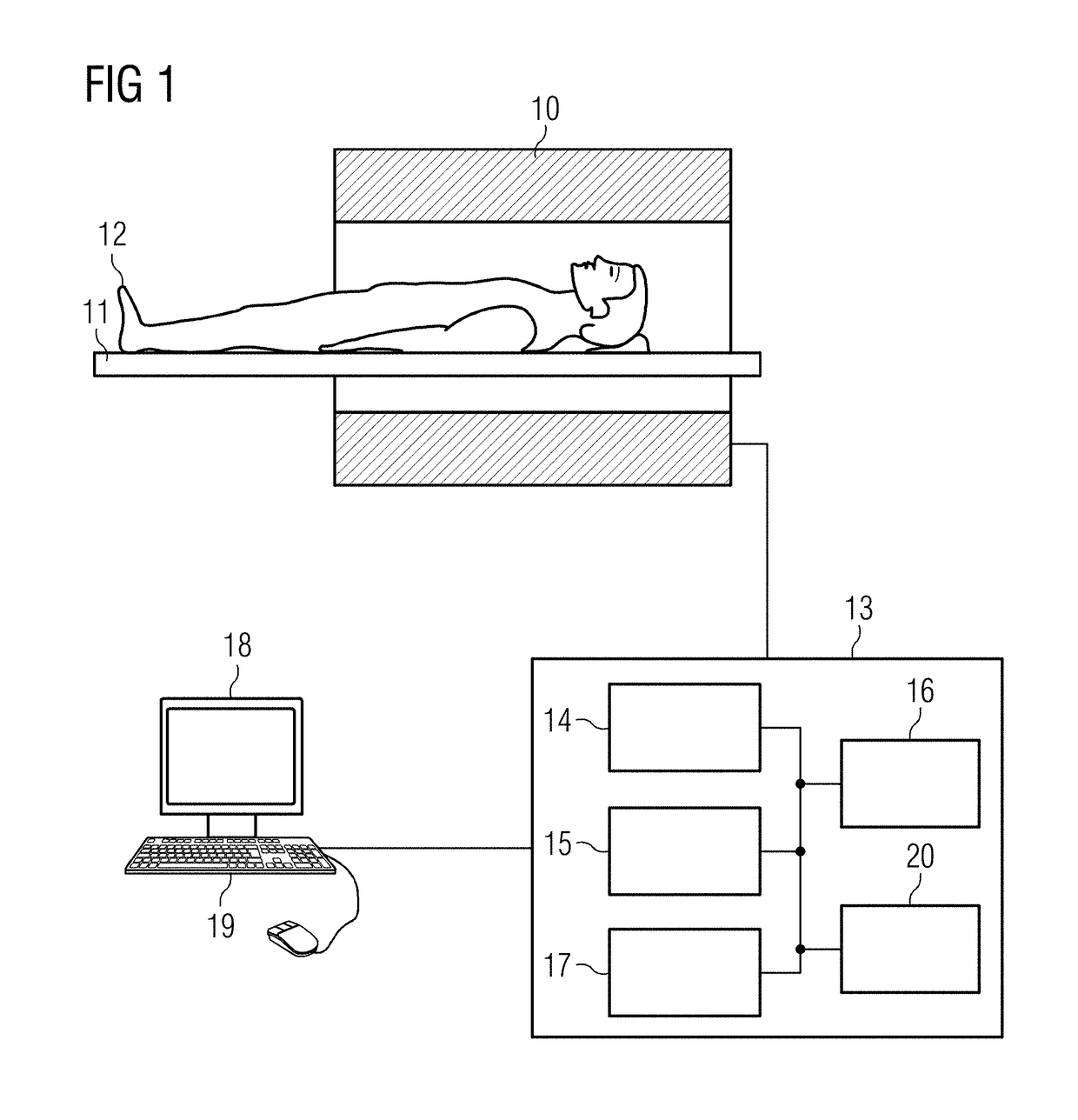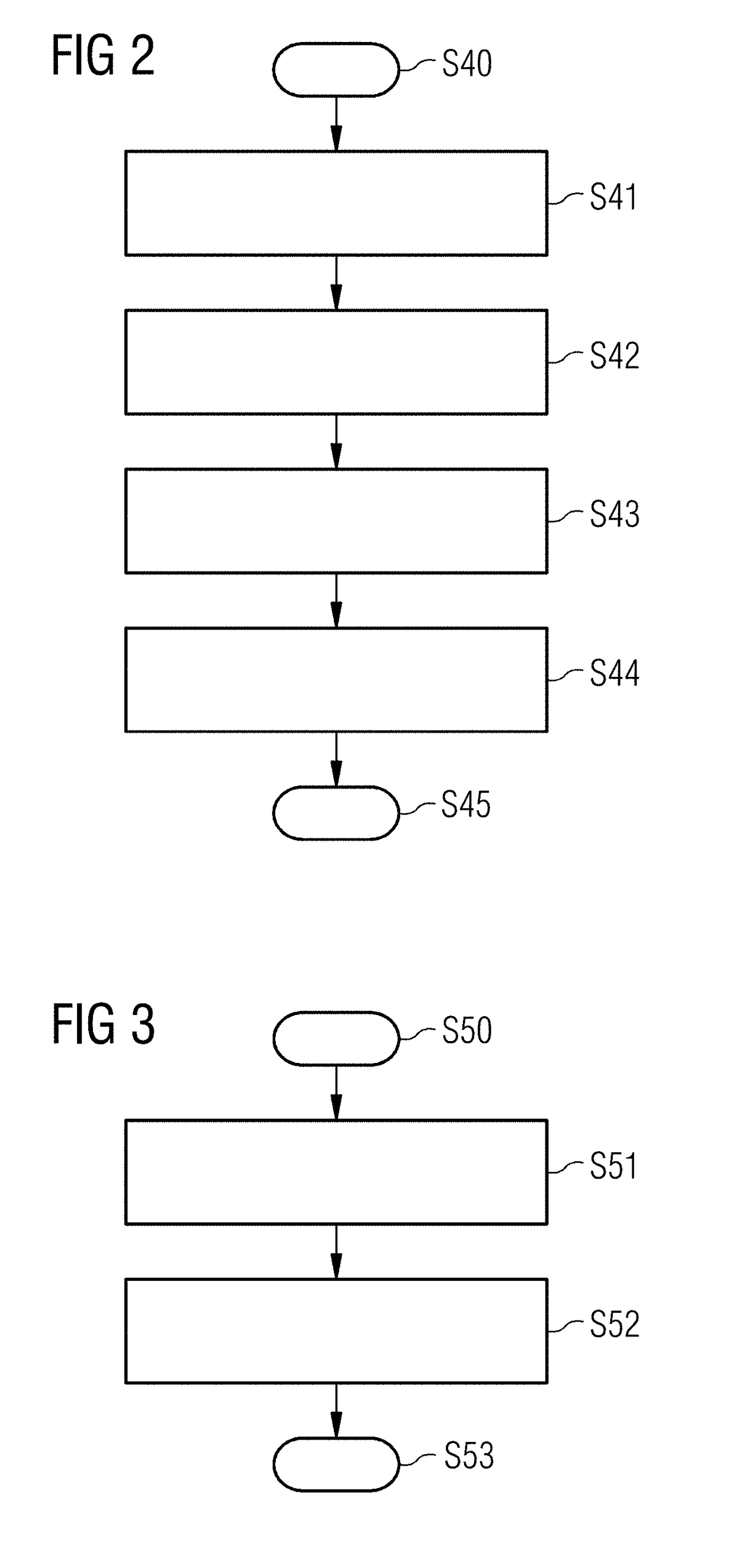Method and computer for local correction of gradient non-linearities
a gradient non-linearity and gradient correction technology, applied in the field of diffusion imaging, can solve problems such as systematic errors and generation of incorrect trace-weighted mr images
- Summary
- Abstract
- Description
- Claims
- Application Information
AI Technical Summary
Benefits of technology
Problems solved by technology
Method used
Image
Examples
Embodiment Construction
[0037]In an exemplary embodiment of the invention, a local correction of gradient non-linearities in diffusion imaging is carried out with the use of an MR apparatus. An optimized combination of diffusion-weighted MR images, which comes closest to the trace averaging, is adaptively calculated for a given quantity of diffusion-weighted MR images and their exact diffusion encoding, which was potentially determined locally from gradient specifications. If a trace averaging can be exactly achieved, this is found. Otherwise, the effect of the residual contributions is minimized. The inventive method is not limited to a specific number of diffusion encodings, in particular it can also be used in the clinically ever more relevant tetrahedral “4-scan trace” encoding. As a result, an effective averaged b-value is also obtained, which can differ from the nominal b-value and which can be used for calculation of the ADCs.
[0038]In diffusion-weighted MR imaging, the weighting is an important cont...
PUM
 Login to View More
Login to View More Abstract
Description
Claims
Application Information
 Login to View More
Login to View More - R&D
- Intellectual Property
- Life Sciences
- Materials
- Tech Scout
- Unparalleled Data Quality
- Higher Quality Content
- 60% Fewer Hallucinations
Browse by: Latest US Patents, China's latest patents, Technical Efficacy Thesaurus, Application Domain, Technology Topic, Popular Technical Reports.
© 2025 PatSnap. All rights reserved.Legal|Privacy policy|Modern Slavery Act Transparency Statement|Sitemap|About US| Contact US: help@patsnap.com


